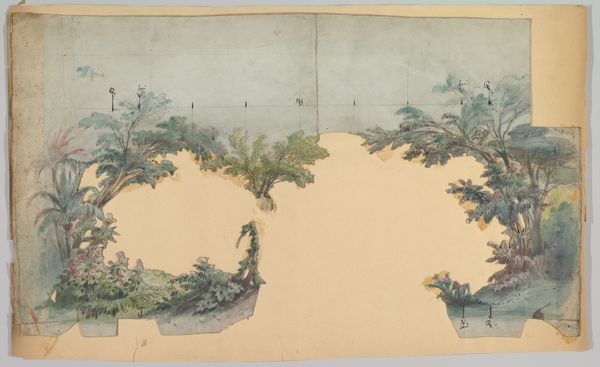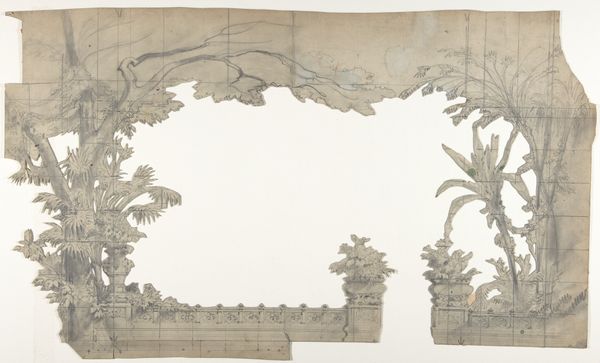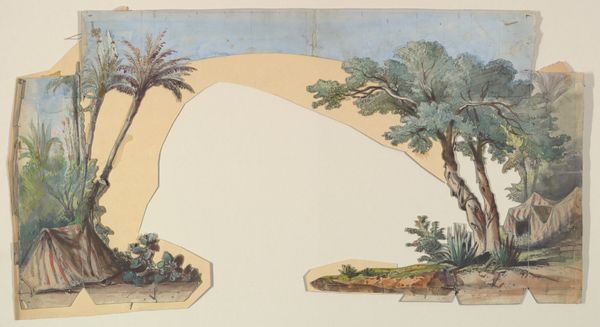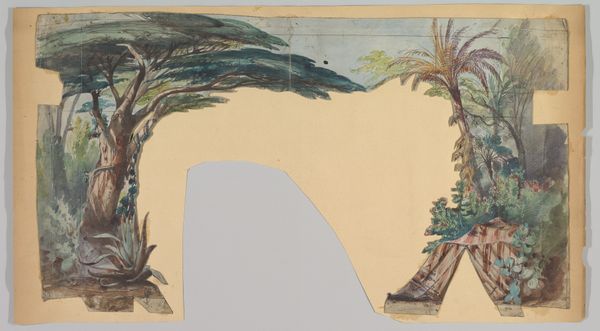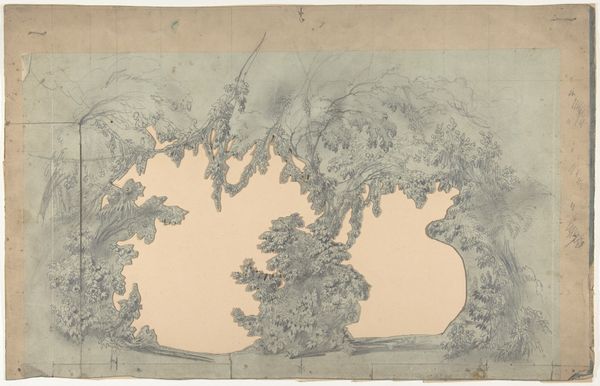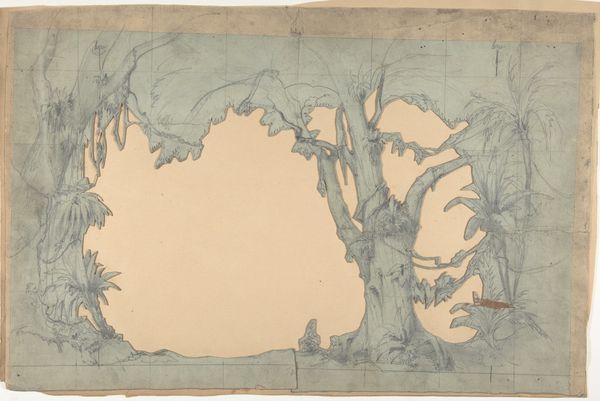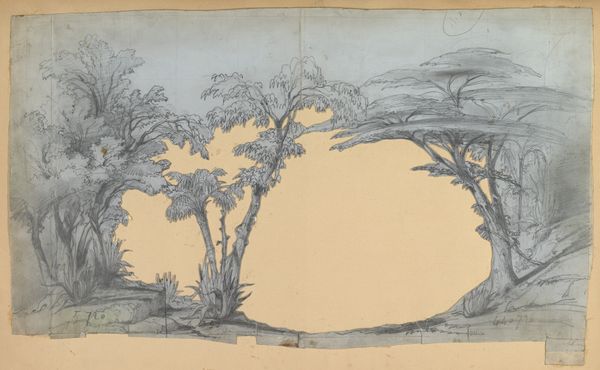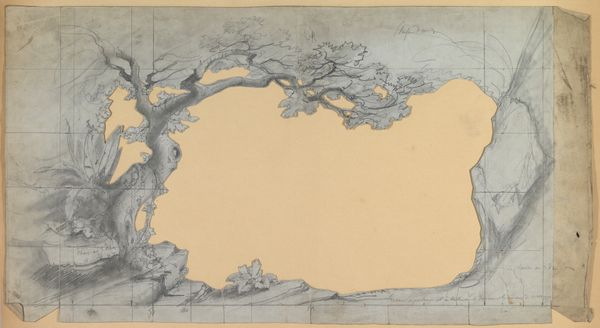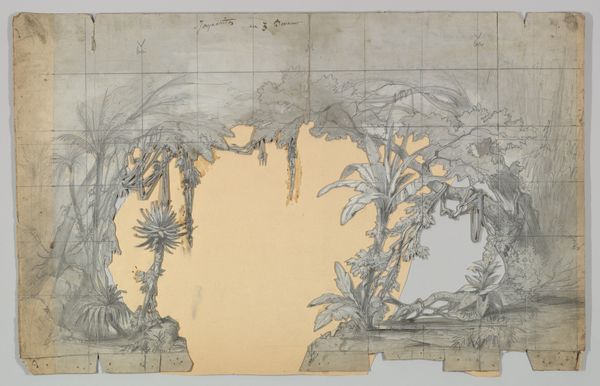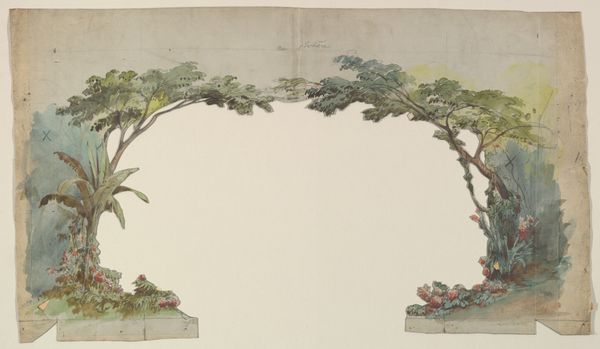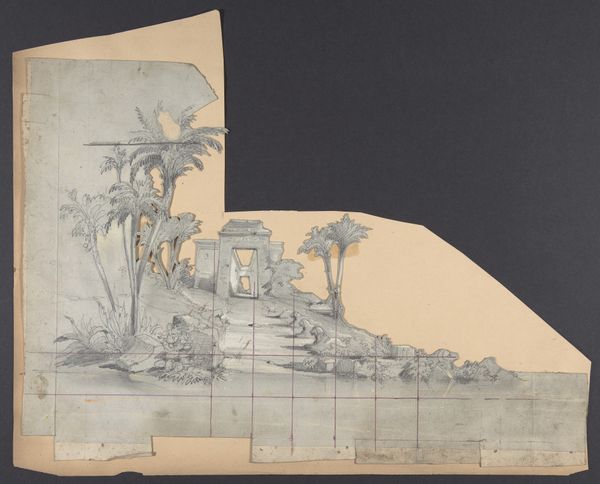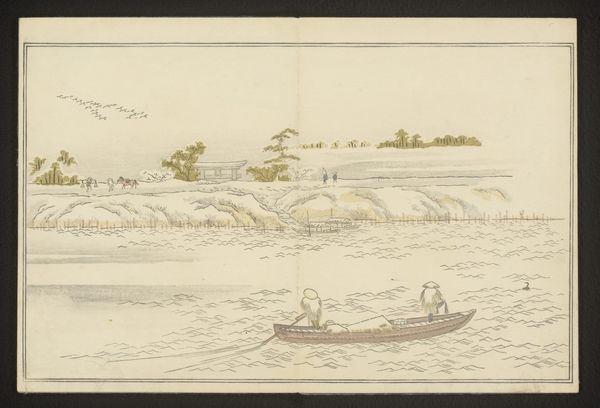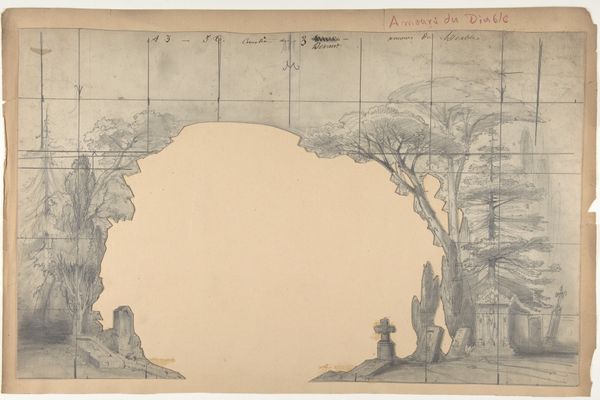
Copyright: Public Domain
Editor: Here we have Eugène Cicéri’s "Design for a Stage Set," likely created between 1828 and 1890. It’s a mixed media piece, combining watercolor, drawing, and what looks like print elements. It feels quite delicate, almost ethereal. What stands out to you? Curator: This stage set design invites a materialist reading, particularly considering the division of labor inherent in theatrical production. Who was involved in translating this design into a three-dimensional reality? How were the materials sourced, fabricated, and assembled? The gridlines, seemingly a technical drawing element, expose the means of its creation, underscoring labor and process involved in crafting illusion. Editor: So, you're focusing less on the idyllic scene and more on the mechanics of bringing it to life on stage? Curator: Exactly. Romanticism often masked the processes that brought these illusions into existence. We see palm trees, evocative of a tropical landscape, created with watercolor. But consider the broader context: where did those pigments come from? Were they created with natural resources from a faraway place that romantic artists enjoyed representing on canvas and stage? This creates a link between aesthetics, material resources, and potentially colonial extraction. The artistic vision romanticizes nature, and it's relevant to look into who was doing the work of constructing and dismantling the scenography, and at what cost. Editor: That's fascinating. I hadn't thought about it that way. It changes how I see the seemingly simple scene; it’s not just a landscape anymore. It’s a product of many hands. Curator: And materials sourced, extracted, and transformed. Looking at art through the lens of its production helps us unearth these often-overlooked dimensions, challenging the focus solely on the artist's vision. It makes us consider a whole range of processes from resource extraction to artistic production, bringing the invisible workers and raw materials into focus. Editor: I've definitely learned to appreciate the role of production and labor behind art today. Thanks!
Comments
No comments
Be the first to comment and join the conversation on the ultimate creative platform.
